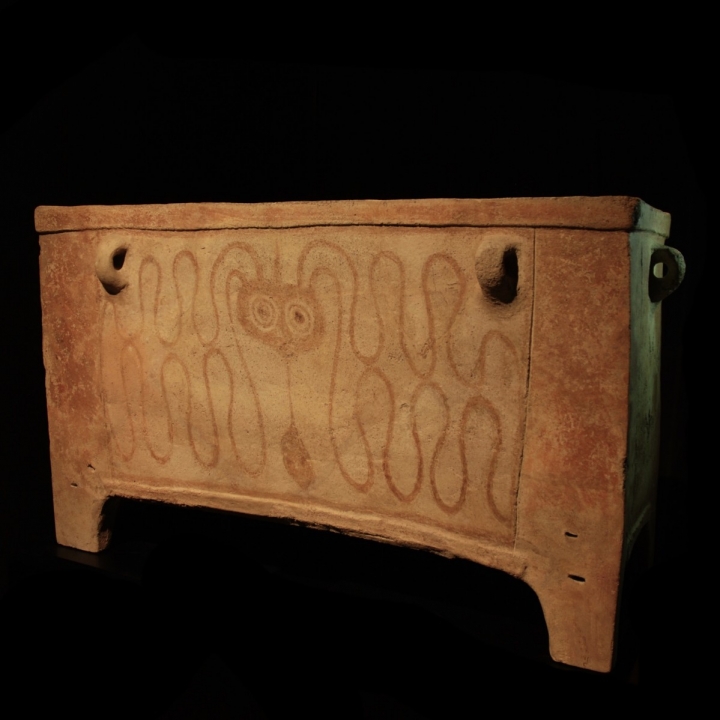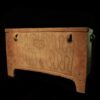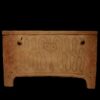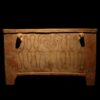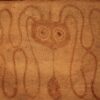Late Minoan Larnax
Culture: Minoan
Period: 1400-1200 B.C.
Material: Terracotta
Dimensions: 67 cm x 107 cm x 48 cm
Price: Sold
Ref: 2369
Provenance: German collection U. G., Bad Birnbach, acquired prior to 1975. Thence in the Swiss collection of Dr. R. Last with Harlan J. Berk, Ltd, Chicago. Published in: Harlan J. Berk Buy and Bid Sale of 10. May 2011, lot 266. As well as Harlan J. Berk 194th Buy and Bid Sale of 9. July 2015, lot 302.
Condition: Reassembled from a few large pieces. Minimal fillings and no missing parts.
Description: Rare, chest-shaped terracotta coffin with four legs. These funeral coffins called Larnax imitating the wood predecessor and became famous for their exceptional painting. The long sides of the present larnax are each painted with an octopus whose long tentacles are spread wavelike over the entire area. The eyes are large and round and stare at the viewer. Maritime creatures are popular in the Minoan painting, but the octopus is by far the most important motive. See: L. Vance Watrous, "The Origin and Iconography of the late Minoan painted Larnax", in the Aegean Bronze Age Symposium at the Institute of Fine Arts, New York, October 1983. Six massive support rings – two on each of the long sides, as well as one on each of the short sides – served for transportation. The corpse was buried in the relatively small coffin bent forward. Three cross struts at the floor supported the stability. Small holes in the bottom should apparently expedite the decomposition of the body. An exceptional, highly museum-quality object.



